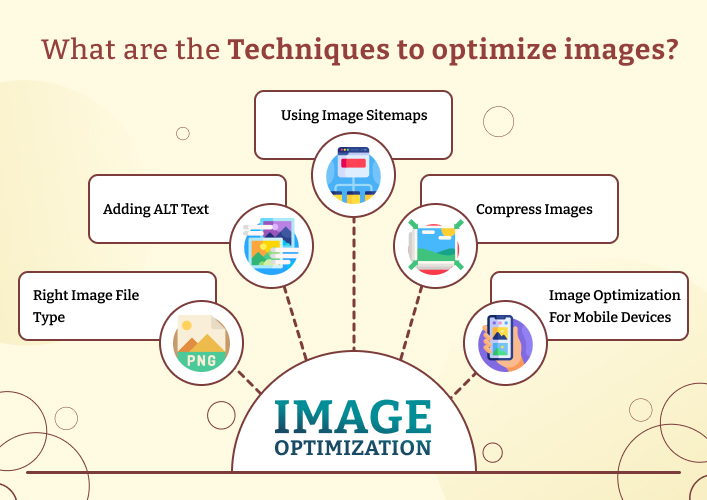Why do you need to optimize images?
- One way in which optimized photos improve the user experience is by making the site load quicker. Images that take too long to load might cause users to get frustrated and leave your site, which in turn can hurt your page rank.
- Optimize images to bring organic traffic to your site. The information and context of photographs may be better understood by search engines if they are optimized. Because of this, they will be able to properly index your photographs and include them in relevant image search results, increasing your site’s exposure and attracting people who are seeking visual material.
- People are using image searches to find particular photos or for visual inspiration. You may receive more relevant clicks from search engine users by optimizing your photographs so that they show up in image search results. This is a chance to introduce your business to those who could become regular visitors or buyers.
- Users who are blind or have low vision may still access your material as long as you provide informative alt text with your photographs. Alt text is used by search engines to properly interpret and index your photographs, opening them up to a wider audience.
- Eye-catching and thought-provoking photos may quickly spread over social media. Your website’s authority with search engines may be boosted when people share and link to your optimized photographs on other websites. Because of this, your SEO can improve as a whole.
What are the techniques to optimize images?

There are various ways through which you can optimize images and improve the SEO of your website.
Right Image File Type
There are many file format types for images. For example, SVG, GIF, JPEG, WEBP, PNG, etc. You need to decide on the image format that can be optimized for size without compromising the quality of the image. You can consider the purpose of the image for the decision.
For example, for complex images with a broad color palette, the JPEG format is the most common choice. JPEG is great because it strikes a good balance between picture quality and file size, making it a good choice for images with a high resolution. PNG is often used for pictures that need to be transparent or have a restricted color palette. When compared to JPEG and PNG, WEBP’s file sizes tend to be less, and its picture quality is just as high.
Adding ALT Text
When optimizing photos for search engine rankings, alt text, and title tags are crucial. If you want search engines to understand your images, you should use alt text. While alt text is necessary for those with visual impairments, title tags may help with search engine optimization and improve usability.
Using Image Sitemaps
The purpose of an image sitemap is to help search engines find and index the photos on your website. When you upload an image sitemap to search engines, you tell them everything about your images—where they are, what they’re called, and more. Whether you’re adding or removing photos from your website, it’s crucial to keep your image sitemap up-to-date.
Compress Images
The length of time it takes for a page to load is directly proportional to the size of its picture. Your search engine rankings might take a downward turn if your pages load slowly. Thus, reduce the size of your files for web pages load more quickly. Furthermore, try to retain the highest possible image quality by not blurring the pictures.
Image Optimization For Mobile Devices
Mobile users care about page load speeds and picture quality, therefore it’s crucial to compress photos without compromising clarity. If you use responsive design approaches, your photos will automatically adjust to fit any screen size. A lazy loading approach, in which pictures are loaded only when they are really needed, may further boost mobile speed.
Conclusion
Your website’s performance and visibility in search engine results may be improved by using the aforementioned strategies. Web pages with smaller graphics often load quicker, which is a ranking factor for search engine optimization. By providing detailed descriptions of your photos using alt tags, you may improve their visibility and accessibility. SEO-friendly image optimization is a great way to boost your website’s rankings and attract more of your target audience.
FAQs
What is image optimization?
What are the benefits of optimizing images?
What are image optimization techniques?
What is the best image optimizer?
Does adding images and videos improve SEO?
Ravi Bhojani is the Chief Marketing Officer (CMO) at Alian Software, where he spearheads the company’s marketing strategies and drives its brand presence in the competitive IT services landscape. With over a decade of experience in the technology and marketing sectors, Ravi has consistently demonstrated his ability to blend innovative marketing techniques with deep industry knowledge to deliver outstanding results.